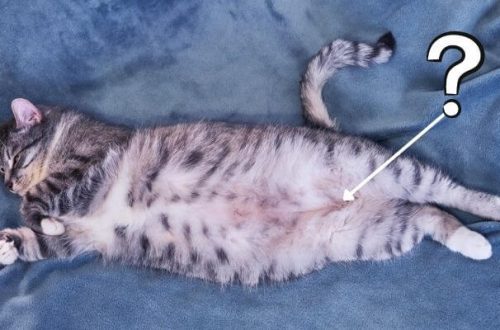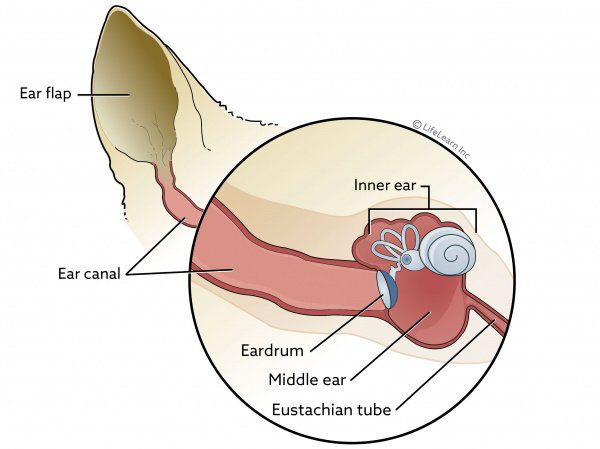
Otitis media in cats
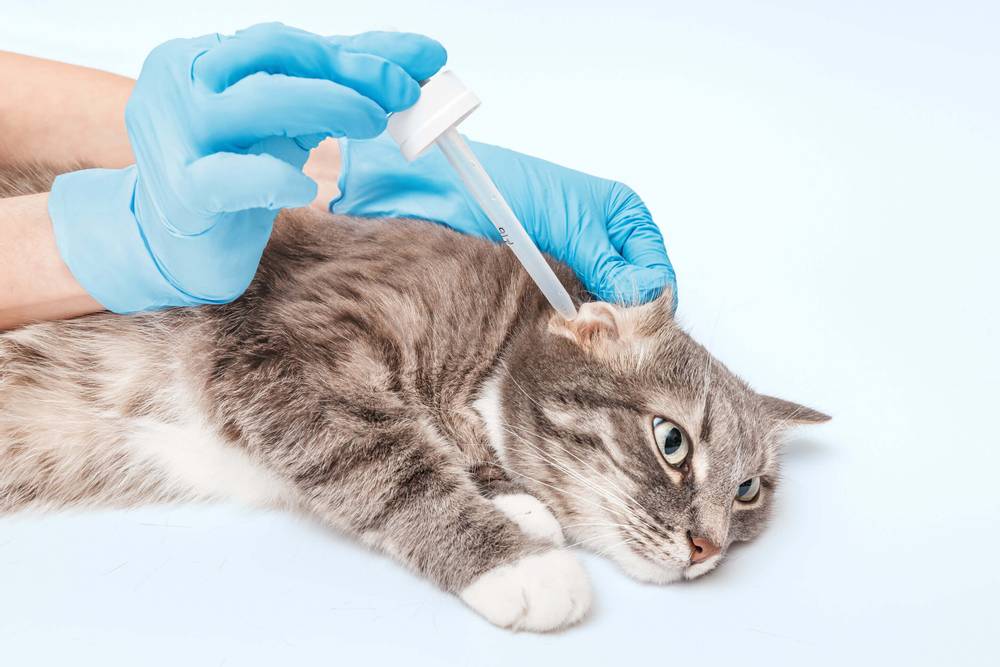
Contents
Types of otitis media
Depending on the localization of the process, otitis in cats can be:
Outer. It is manifested by inflammation of the auricle, external auditory canal and tympanic membrane. This form is considered the initial stage of the disease and is characterized by a milder course of the disease.
Medium. This type is characterized by inflammation of the cavity behind the eardrum. With this localization, otitis media is considered more dangerous, as it can cause neurological symptoms (for example, head tilt). The prognosis for this type of otitis media is favorable only in cases where timely treatment is started.
Interior. It is manifested by inflammation of the inner ear, located in the thickness of the temporal bone. It proceeds severely and is always accompanied by neurological disorders.
But in some particularly severe cases, otitis media can occur with the defeat of all three departments at the same time.
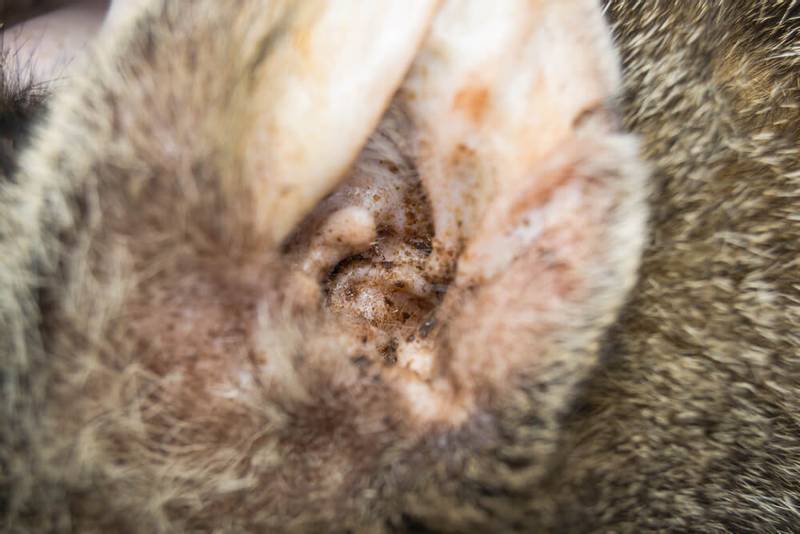
Causes of otitis media
The reasons are diverse and are divided into primary, predisposing and secondary.
Primary factors include:
Parasites are the most common cause of otitis media in cats (up to 50% of all otitis media). Ectoparasites include microscopic mites (ear mites – Otodectes, less often scabies and subcutaneous mites – Notoedres, Demodex);
Allergies – insect stings, food allergies, atopic dermatitis, contact allergies;
Foreign bodies – the likelihood of foreign bodies entering the ear canal in cats is significantly lower than in dogs. Cats that have access to the street are prone to this problem. The role of foreign bodies can be hair, seeds, parts of plants, earth, etc.;
Neoplasms – benign (polyps, adenomas and cysts of ceruminous glands) and malignant (adenocarcinomas of ceruminous glands). In the outer ear, cats can also develop other types of neoplasms, but it is the ceruminous glands that are most often reborn;
Less common causes include autoimmune disease and injury.
Predisposing factors include:
Structural features (congenital or acquired narrowing of the ear canals, hanging ears);
Wet ear canal (frequent bathing, frequent use of ear cleaning lotions);
Aggressive cleaning, leading to traumatization of the ear canal;
Excessive production of earwax.
Secondary causes occur against the background of otitis media that has already appeared – in other words, the inflamed ear becomes a favorable place for the reproduction of secondary microflora: bacteria (cocci and bacilli) and fungi (yeast). The appearance of a secondary infection can aggravate otitis media in a cat if timely treatment is not started.
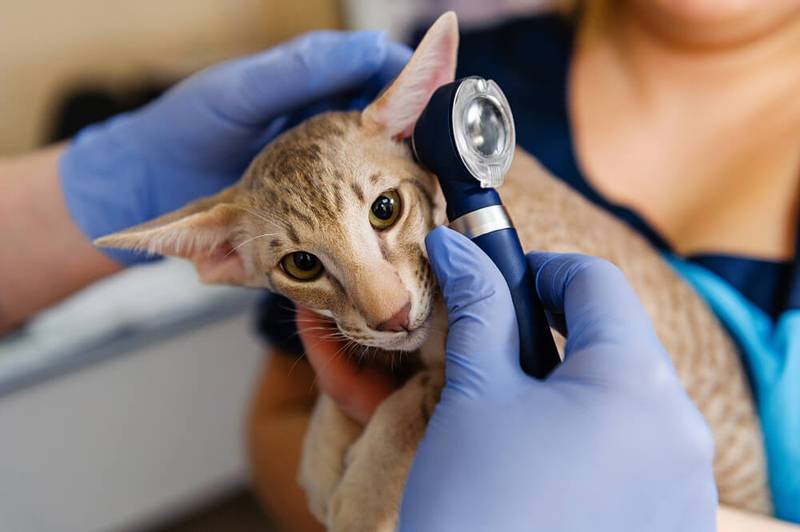
Symptoms of otitis media
The first signs of otitis media in cats are:
Itching and restlessness in the ear area (scratching, head shaking, ear hanging);
Hyperemia (redness) and thickening of the auricle;
Excess secretion of the secret, as well as a change in its color and smell;
Pain on touching the ears.
If timely treatment of otitis media is not started, the disease will progress and spread to other parts of the ear. Later symptoms of otitis media in cats include the following:
head tilt;
Impaired balance and coordination;
Horner’s syndrome;
Bleeding from the ear;
Ulceration of the auricle.
The appearance of one of the above symptoms requires an emergency visit to the clinic.
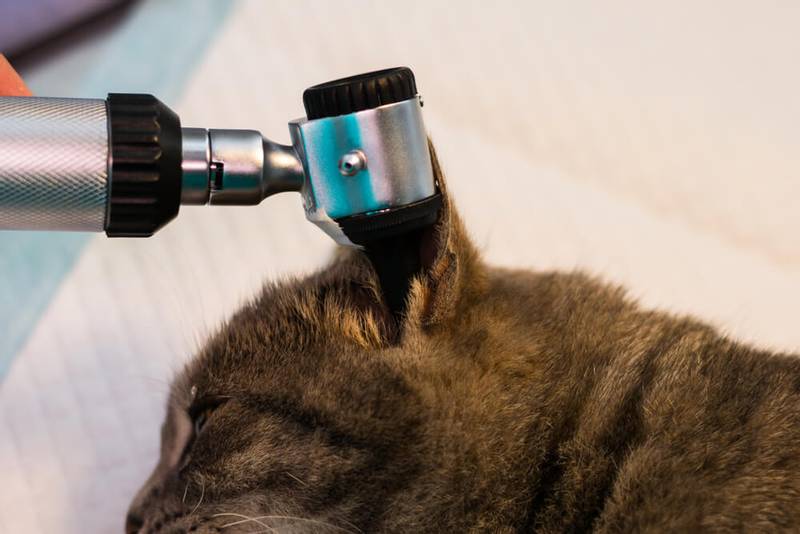
Diagnostics
To make an accurate diagnosis, an integrated approach is required, including a number of studies:
Examination of the patient and collection of anamnesis. This important point will allow the doctor to find out the necessary information about the course of the disease and assess the condition of the auricle;
Otoscopy. This study is necessary to identify foreign bodies, otitis media and evaluate the changes that have occurred in the auditory passage as a result of inflammation, as well as to determine the amount and nature of the discharge. Otoscopy also allows you to assess the condition of the eardrum;
Analyzes. The necessary tests for suspected otitis include scraping and cytology of the contents of the ear canal. Scraping will show the presence of parasites, and cytology of the ear contents is needed to determine the type of microflora, which allows you to determine the type of otitis media (bacterial, fungal or mixed) and select drugs for treatment;
Histology. This study may be required in the case when the neoplasm is the cause of the inflammatory process in the ear. Only the result of a histological examination will show whether this formation is benign or malignant.
Imaging diagnostics (MRI). It is used for otitis media when neurological symptoms appear.
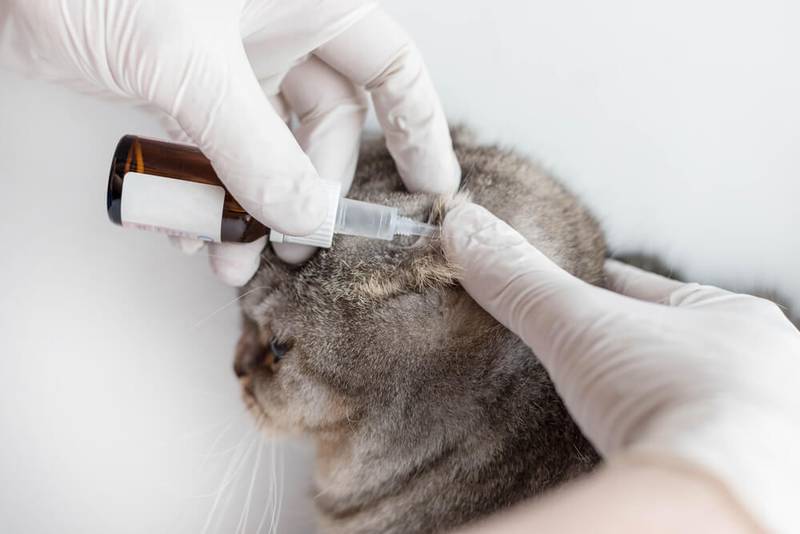
Treatment of otitis media in cats
After a comprehensive diagnosis of otitis media and the final diagnosis, the veterinarian prescribes treatment. Depending on the underlying cause of otitis media, treatment may include one or more of the following therapies:
local – use of ear drops, ear cleaning, anti-mites preparations;
Systemic – the use of systemic antibiotics, anti-inflammatory drugs or anti-allergy drugs, etc.;
Surgical – with neoplasms, chronic irreversible changes in the structure of the ear.
Courses of treatment are selected individually and depend on the severity of otitis media, in some cases, long-term therapy is necessary for complete recovery.
Prevention
In order to minimize the likelihood of otitis media, the following preventive measures must be observed:
Clean ears only when dirty. If in doubt about whether or not to clean, consult with a specialist. Too frequent cleaning of the ears can lead to otitis media;
To clean the ears, use specialized hygienic solutions intended for animals. Apply should be in accordance with the instructions, using the optimal amount of lotion;
Do not use cotton swabs for cleaning. Gently clean only the visible parts of the ear using a cotton pad;
Treat your pet regularly for ectoparasites. This will eliminate parasitic and allergic factors.
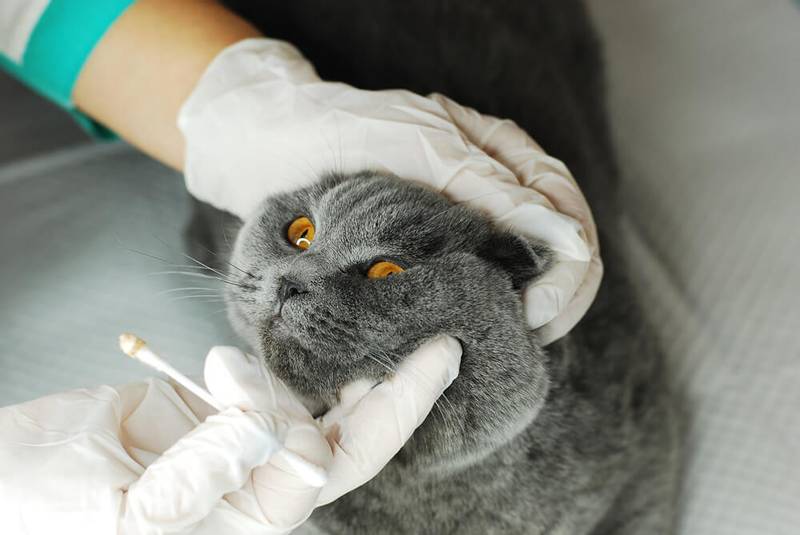
Otitis in cats: the main thing
There are many factors that cause this disease, and even with all the necessary preventive measures, unfortunately, this disease can overtake a pet.
To avoid this, you must follow a few simple rules:
Check your pet’s ears regularly. If you have questions and suspect otitis media in your pet, we recommend that you consult with a specialist.
It is not recommended to independently use medications for the treatment of otitis media, unless they have been prescribed by a veterinarian. This can harm the pet and aggravate the course of the disease.
Clean your ears following the rules listed above.
At the first signs of otitis media, you should contact the clinic. Self-medication and postponing often lead to an aggravation of the process and sad consequences for the pet.
The article is not a call to action!
For a more detailed study of the problem, we recommend contacting a specialist.
Ask the vet
October 29 2020
Updated: February 13, 2021




